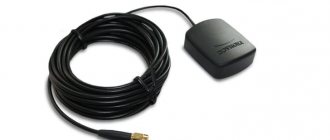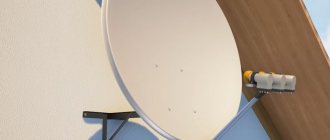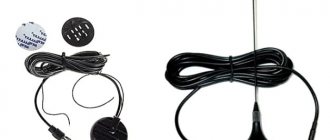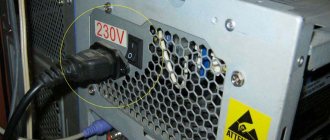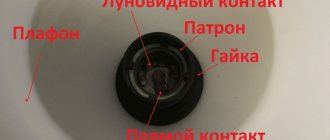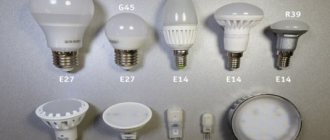Router location
One of the most common reasons for a bad signal is the incorrect location of the router. The antenna begins to radiate the network in all directions in the area. Moreover, the signal weakens significantly as it approaches the edge of the zone. The closer you are to the access point, the higher the signal strength will be. If you install a WiFi router in the middle of the room, the distribution will be much more efficient. If the access point is installed somewhere in a corner, then part of the signal will go outside the house, the far part of the room will pick up only a small part.
If you install the router in the center of the room, you will achieve even distribution of the signal. Sometimes it is difficult to implement this in practice due to inappropriate planning.
Why might the router signal be weak?
Above, we looked at how to strengthen the signal of a Wi-Fi router at home in different ways. But before taking any measures, you need to understand the reasons for the deterioration in communication quality. The expert identifies the following factors:
- Mechanical. Many structures create obstacles for the passage of data packets - ceilings, furniture, walls. That's why the router needs to be installed in a place where there are no such obstacles or a minimum number. The greatest interference is caused by mirrors, glass, water, as well as structures made of concrete or brick. If you don’t strengthen Wi-Fi, distant parts of the room will remain without communication.
- Electromagnetic. The sources of interference are microwave ovens, radiotelephones, bluetooth and other devices. They create a background that interferes with the operation of the access point. When asked how to strengthen a router's WiFi signal, many experts answer simply - find the main source of interference and turn it off.
- Problems with the firmware. Outdated software can affect the quality of the Wi-Fi network. To avoid consequences, you need to update the firmware from time to time. Router manufacturers post information publicly on official platforms. All that remains is to download and install the software through the interface.
- Incorrect antenna installation. One of the reasons for a poor WiFi signal is the vertical placement of antennas. If there are two of them, place the elements at an angle of 45 degrees relative to each other.
The knowledge gained allows you to quickly determine the reasons and find the best method for increasing the range of a WiFi router at home.
Reduce the number of obstacles
The range of the router can directly depend on the obstacles encountered along the signal path. If you reduce their number as much as possible, the frequency will improve significantly. When passing through any object, part of the energy of the electromagnetic wave is lost. But how much it depends on the surface material.
If there is a mirror in the path of the signal, the radio wave will be reflected from its surface, scattering the signal. If you make a small redevelopment so that the signal spreads evenly, the Internet speed will be higher.
What affects the Wi-Fi signal and coverage area
Neighborhood Wi-Fi networks. The first and most critical factor affecting the quality of a router’s wireless network is not a microwave, as many people think - no. This is most influenced by the same routers that neighbors have. And if this is not yet evident in the currently new 5 GHz range, then in the usual 2.4 GHz range a critical situation has now developed. The more neighbors you have with Wi-Fi, the worse the signal from your router covers your apartment. Due to interference from neighboring devices, your wireless access point will lose almost half of its power even at a distance of three meters. That is, previously one router worked without problems throughout the entire area of the apartment, but now only on half.
Obstacles in the signal path. This is not only the walls and ceilings of the room, but also furniture, household appliances, interior and metal doors and everything else that is located between the Wi-Fi router and the client device: phone, tablet or laptop. In my practice, there was a case when the access point was in a shielded room and as soon as the door was closed, the network disappeared. I’ll say right away that what the Wi-Fi signal dislikes most is fittings and expanded clay, sheet metal, steel frames and shelving, water supply pipes, large wall-mounted aquariums and mirrors.
Appliances. Here, in addition to the same long-suffering microwave, you can add a bunch of other equipment - large LCD TVs and plasma panels, cordless phones, Bluetooth speakers, baby monitors. Even a long USB 3.0 cable lying along the wall can also negatively affect the quality of the wireless network.
Optimal WiFi channel
Almost every home has a router that emits its own signal. The fact that the signals overlap each other reduces the performance of the radio path. If networks operate at the same frequency, then the efficiency of the router is greatly reduced. To resolve this problem, you need to identify and find the network that is least loaded. This will significantly improve the optimal performance of WiFi. If you live in an apartment building, then this will be the best way out of problems with the Internet.
Useful tips
Setting up a D-Link DIR-300 router
There are other ways to boost the signal. This may be possible using laptop settings or using improvised means or making an antenna yourself. It is possible to amplify a router without an antenna if you follow simple rules:
- Set it high.
- Do not place near flat metal objects.
- Avoid radio interference.
Setting up the receiver on a laptop or computer
Few people have thought about how to strengthen the Wi-Fi signal on a personal laptop and whether this is even possible. The solution to a problem, unnoticed by anyone, often lies on the surface. Often, users put their laptop into power saving mode to save battery power. At home, this is of no use, since the beech can be easily connected to the power supply at any time, but Wi-Fi networks “lose” significantly due to this, hence the weak signal. To strengthen it, just change the power settings:
- Open "Control Panel".
- Go to the “Electrical control” section.
- Select "High Performance".
Homemade antennas
Many people know how to slightly strengthen the signal of a wi-fi router with their own hands, without resorting to standard means. What is typical is that the methods work. Increasing the range of the device is possible by making unique wi-fi repeater repeaters with your own hands. This does not require anything special: the manufacturing scheme is quite simple. You need to take a piece of foil or cut an empty tin can, give it a curved shape and install it behind the router, preferably near the wall, artificially creating a directed wave. By reducing the angle, the waves are reflected from the surface of the improvised antenna, the signal is slightly amplified.
Replacing the router
If none of the suggestions help, then the problem lies in the device itself. In this case, there is only one thing left: replacing the wireless router.
Actually, after this, problems are eliminated provided that users do not skimp on the purchase, otherwise they will again have to look for the cause from the outside or do “handicrafts.” It is better to purchase a modern Wi-Fi router that supports operation at a frequency of 5 GHz, then you can forget about a weak signal once and for all.
Replacing the antenna with a more powerful one
Although the antenna will not increase the power of your router, it will increase the gain. If the gain is large, the signal propagation will be increased. There is now a wide range of antennas on the market that are suitable for any router and can improve the supplied signal. This method is effective because it will allow you to expand the propagation zone and increase the sensitivity of the antenna, but it should be noted that dead zones are formed in the ceiling and floor areas.
Option 2. Turn the router into a repeater
Go to the settings of the old router, as shown earlier, and open the wireless mode settings there. Give the device a new IP address - like your main router, but with a different number at the end.
Set a name and password for the new Wi-Fi network that your router will distribute. As in the previous paragraph, it is better to make the names similar. You can set any password.
Find the repeater function in the wireless settings section. It may be called Repeater, Wireless Bridge or WDS on different models.
Turn it on. Click the search button and find your main router that distributes Wi-Fi there. Connect to it.
Enter the password for your Wi-Fi network and save the settings.
Finally, open the DHCP settings again and select the “Disable DHCP Server” option. Reboot your router.
Now place your old router in a suitable place, preferably closer to the middle of the apartment. And the repeater is ready.
Signal repeaters
Such devices are very convenient; they are able to repeat the signal of the main source. They serve as a signal extender that increases the coverage of the occupied area. It will strengthen wifi . If your house has a complex layout and it is impossible to distribute the signal everywhere using one router, then this is the best way out of this situation. Specialized devices designed for this activity do not cut the signal, delivering excellent speed from the main source.
How to strengthen the Wi-Fi signal by replacing antennas?
Your router most likely has several antennas. There are routers on which the antennas are internal, they are not visible, they do not stick out like horns. Or, if the antennas are even external, then they may not be removable. This is very important, because in both the first and second cases, you will not be able to replace them, since you cannot simply remove them. If you have a router with internal or non-removable antennas, then the method described in this article will not work for you.
So, these antennas transmit the Wi-Fi network signal. They come in different capacities. There are antennas with a gain of 2dbi, 5dbi, 8dbi, 10 dbi, these are the most popular. There are also more powerful ones. Antennas of a certain power are already installed on the router by the manufacturer. Depending on the model, price, etc. You can increase the coverage and strength of the Wi-Fi signal by replacing these antennas (which are already installed on the router) with more powerful ones.
Almost all network equipment manufacturers produce such antennas, and they can be purchased at almost any computer hardware store. I have three TP-LINK TL-ANT2408CL antennas. These are antennas with 8dbi gain. By the way, a very popular model, at a very good price. They are sold individually, so you can buy as many as you need. The connector for these antennas is RP-SMA. They fit most routers. If the antennas are from TP-LINK, this does not mean that they are only suitable for TP-LINK routers. Everyone needs to change antennas, this is mandatory.
It should be noted that installing more powerful antennas is not the only way to strengthen the Wi-Fi network signal. There are other ways: the correct location of the router, setting up a wireless network, and even homemade Wi-Fi antennas. I wrote about this in the article: How to strengthen the signal of a Wi-Fi network? We increase the Wi-Fi range.


